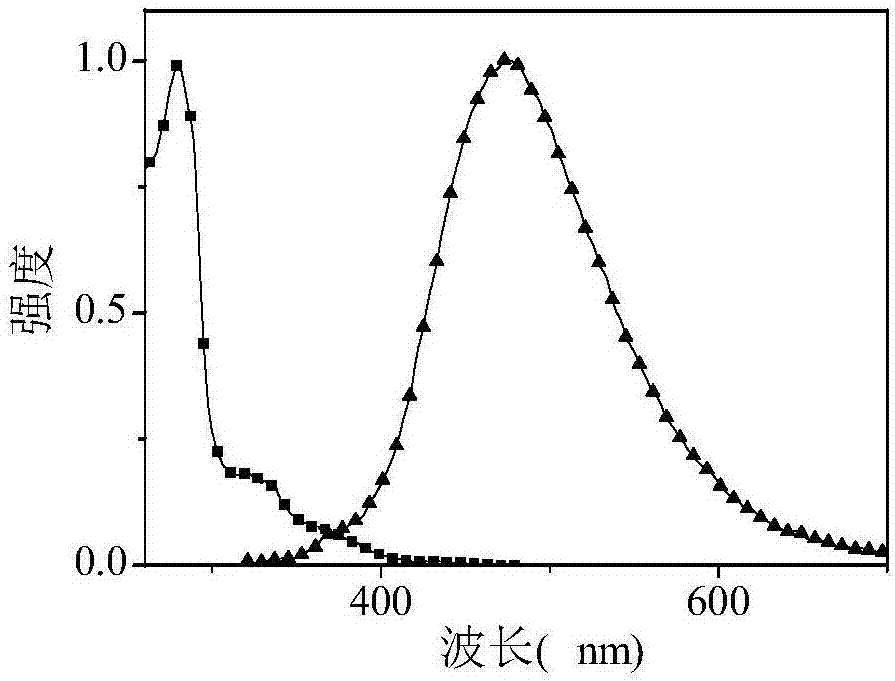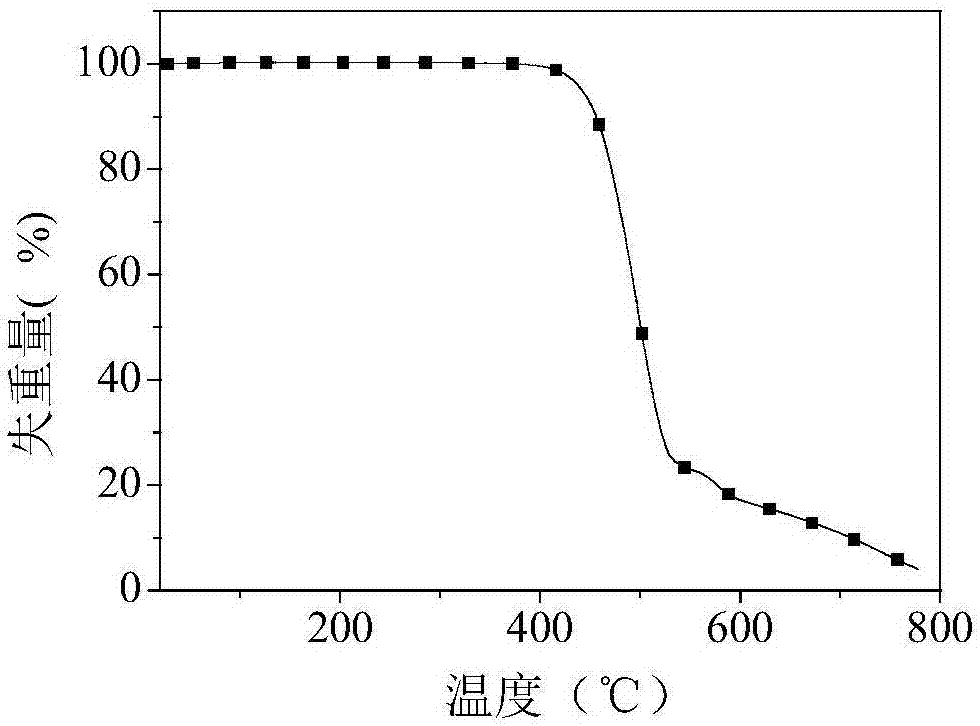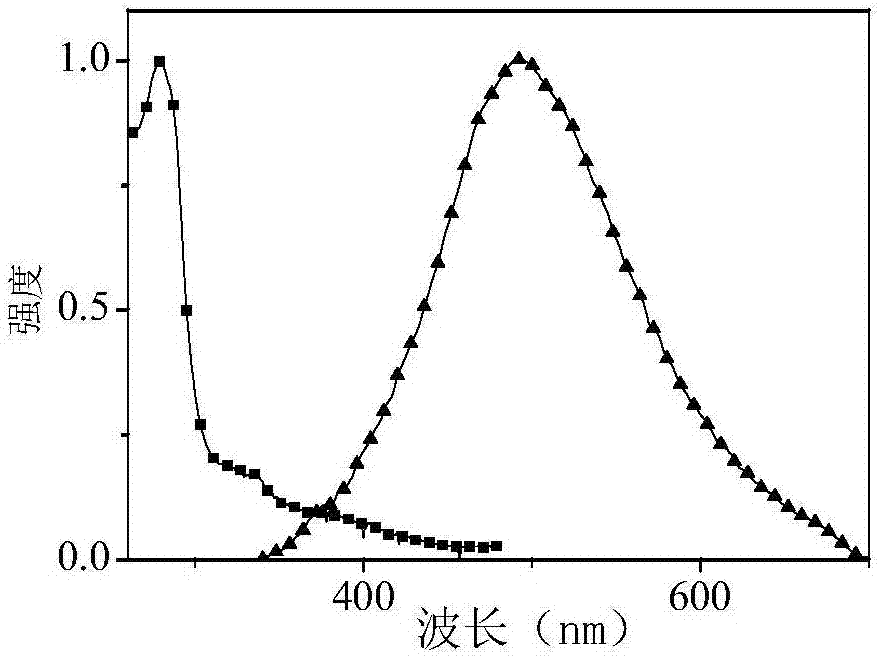Thermal-activated delayed fluorescent material based on carbazole and phosphine oxide as well as preparation method and application
A technology of delayed fluorescence and thermal excitation, applied in luminescent materials, chemical instruments and methods, semiconductor/solid-state device manufacturing, etc., can solve the problems of low blue color purity, poor material singleness, and low efficiency
- Summary
- Abstract
- Description
- Claims
- Application Information
AI Technical Summary
Problems solved by technology
Method used
Image
Examples
specific Embodiment approach 1
[0090] Specific implementation mode 1: This implementation mode is based on the structure of the thermally excited delayed fluorescent material based on carbazole and phosphine oxide.
[0091]
[0092] Wherein, the R is H or t-C 4 h 9 .
specific Embodiment approach 2
[0093] Embodiment 2: This embodiment is a thermally excited delayed fluorescent material based on carbazole and phosphine oxide The structure is Its preparation method is specifically completed according to the following steps:
[0094] 1. Add 1,4-dibromo-2,5-difluorobenzene, nitrogen-containing heterocyclic compound and potassium carbonate into dimethyl sulfoxide, and then react in an argon atmosphere at a temperature of 120°C to 160°C 6h to 12h to obtain the mixed solution I containing the reactant; use the mixed solution of water and dichloromethane to extract the mixed solution I containing the reactant, and then use anhydrous sodium sulfate to dry the extracted organic layer, and then Using a rotary evaporator to evaporate the solvent under reduced pressure to obtain a crude reaction product I; using the solvent I as an eluent, purify the crude reaction product I by column chromatography to obtain a reaction product I;
[0095] The solvent I described in step 1 is a m...
specific Embodiment approach 3
[0107] Specific Embodiment Three: Thermally Excited Delayed Fluorescence Materials Based on Carbazole and Phosphine Oxygen The structure is Its preparation method is specifically completed according to the following steps:
[0108] 1. Add 1,5-dibromo-2,4-difluorobenzene, nitrogen-containing heterocyclic compound and potassium carbonate into dimethyl sulfoxide, and then react in an argon atmosphere at a temperature of 120°C to 160°C 6h to 12h to obtain the mixed solution I containing the reactant; use the mixed solution of water and dichloromethane to extract the mixed solution I containing the reactant, and then use anhydrous sodium sulfate to dry the extracted organic layer, and then Using a rotary evaporator to evaporate the solvent under reduced pressure to obtain a crude reaction product I; using the solvent I as an eluent, purify the crude reaction product I by column chromatography to obtain a reaction product I;
[0109] The nitrogen-containing heterocyclic compound...
PUM
| Property | Measurement | Unit |
|---|---|---|
| Thickness | aaaaa | aaaaa |
| Current density | aaaaa | aaaaa |
| Maximum brightness | aaaaa | aaaaa |
Abstract
Description
Claims
Application Information
 Login to View More
Login to View More - R&D
- Intellectual Property
- Life Sciences
- Materials
- Tech Scout
- Unparalleled Data Quality
- Higher Quality Content
- 60% Fewer Hallucinations
Browse by: Latest US Patents, China's latest patents, Technical Efficacy Thesaurus, Application Domain, Technology Topic, Popular Technical Reports.
© 2025 PatSnap. All rights reserved.Legal|Privacy policy|Modern Slavery Act Transparency Statement|Sitemap|About US| Contact US: help@patsnap.com



